This study is focused on predicting multiple physical phenomena of EV components by applying machine learning techniques. It is expected to precisely predict the performance of EV components in limited data situations and contribute to deriving optimal design and operational strategies.
Research
Our group is pursuing experimental and numerical studies pertaining to thermal management of electric traction and hybrid propulsion systems for advanced mobility applications.
The main objective of our numerical research is to develop better computational methods for modeling the complex interaction of thermodynamics, fluid mechanics, and electromagnetic forces using traditional numerical methods as well as scientific machine learning. We are also invested in validating our computational studies using experimental apparatus to better understand thermofluidic phenomena in electric vehicles and urban air mobility applications.Research Topics:
- Thermofluidic modelling using scientific machine learning
- Battery thermal management based on Optical Frequency Domain Reflectometry
- Electric traction motor and powertrain design and thermal management
- In-situ electric motor rotor thermometry using mid-infrared hollow waveguide
- Tail-pipe and battery off-gas emission gas sensing using QEPAS
- Optical gas sensing using TDLAS and SCLAS
Thermofluidic modelling using scientific machine learning
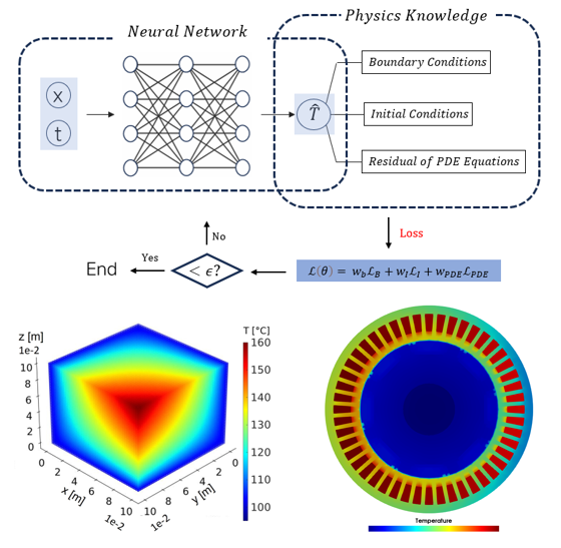
Publications
Battery thermal management based on Optical Frequency Domain Reflectometry
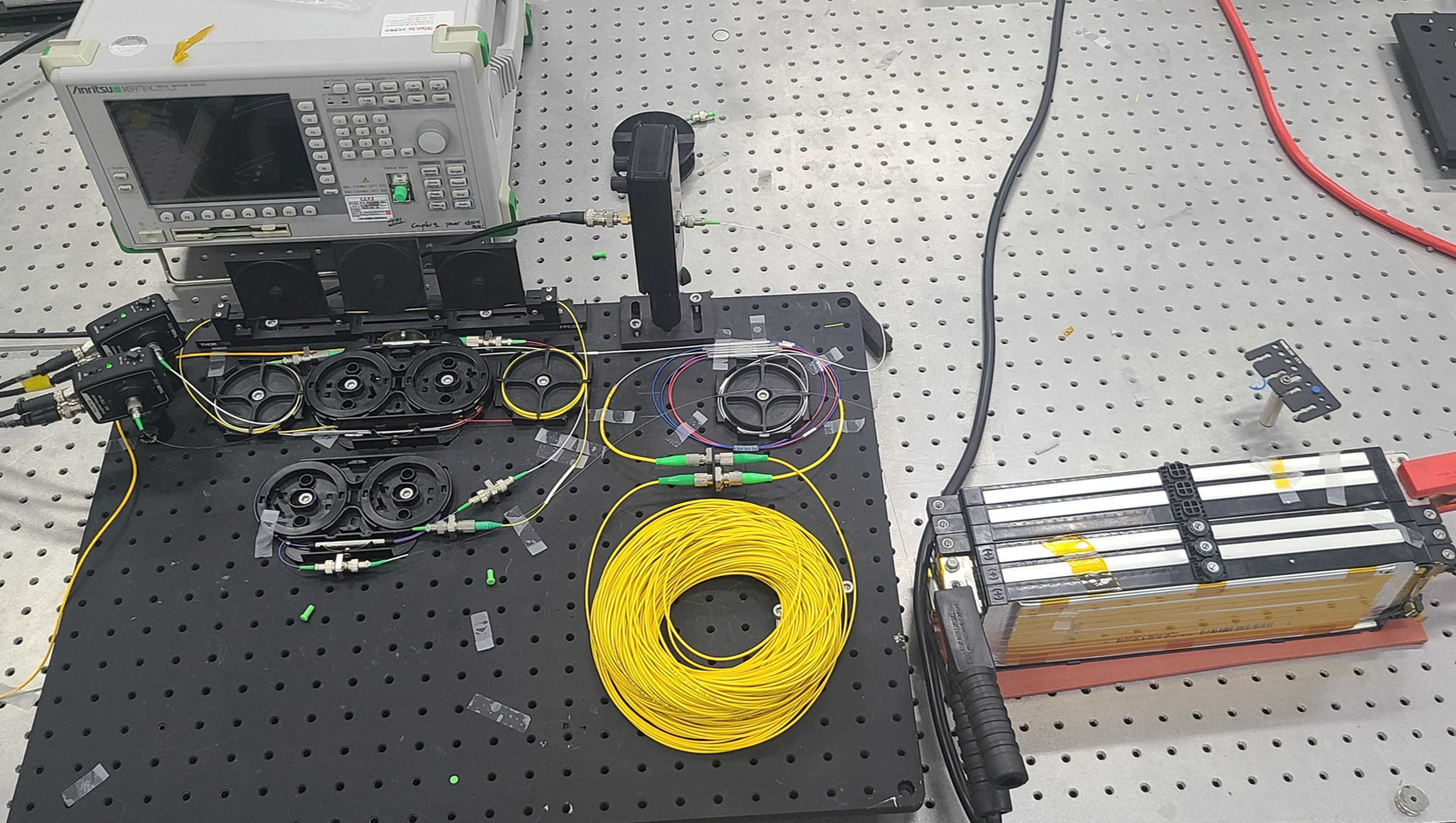
This research is focused on developing optical sensing technique for probing temperature and strain along an optical fiber. It is expected to probe small temperature variations with high spatial resolution, ideal for characterizing temperature distribution within dense energy storage systems and compact energy conversion systems with no electromagnetic interferences. Additionally, this research aims to develop a control model for preventing thermal runaway and enhancing the efficiency of cooling in electric vehicle batteries using OFDR experiments. This model will allow for precise monitoring and management of temperature within the battery system, improving safety and performance.
Publications
Electric traction motor and powertrain design and thermal management
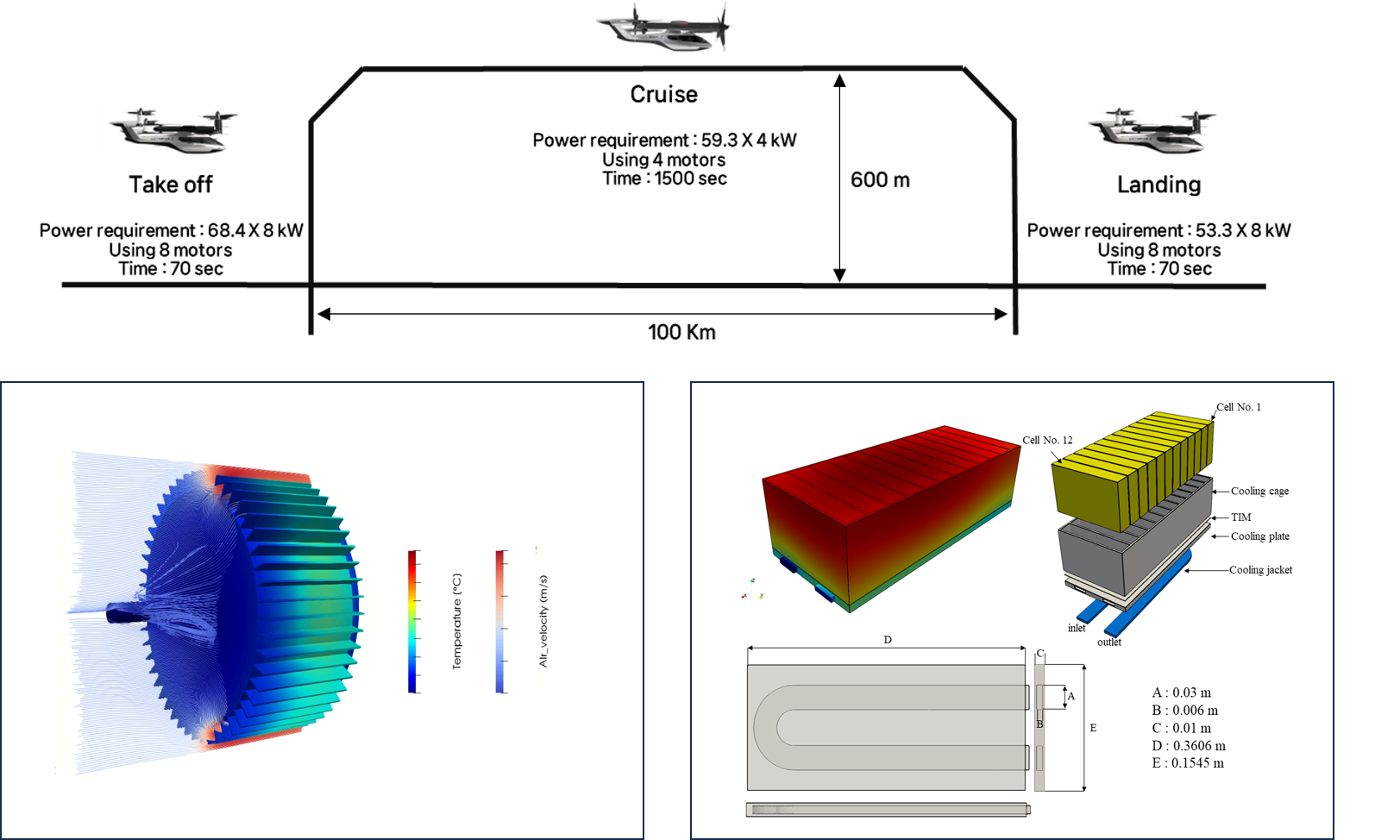
Urban Air Mobility(UAM) has recently emerged as the core of the new growth industry as technology demand and importance grow, and the electric-powered e-Propulsion system is drawing attention. However, research on this, especially the motor-inverter-centered e-Propulsion itself, remains incomplete.
Since the performance of the traction motor, inverter, and battery, which are core components, may be limited or damaged by heat, research on this is necessary. Accordingly, we intend to study the methodology for effective thermal management of parts of e-Propulsion using CFD.
Publications
In-situ electric motor rotor thermometry using mid-infrared hollow waveguide
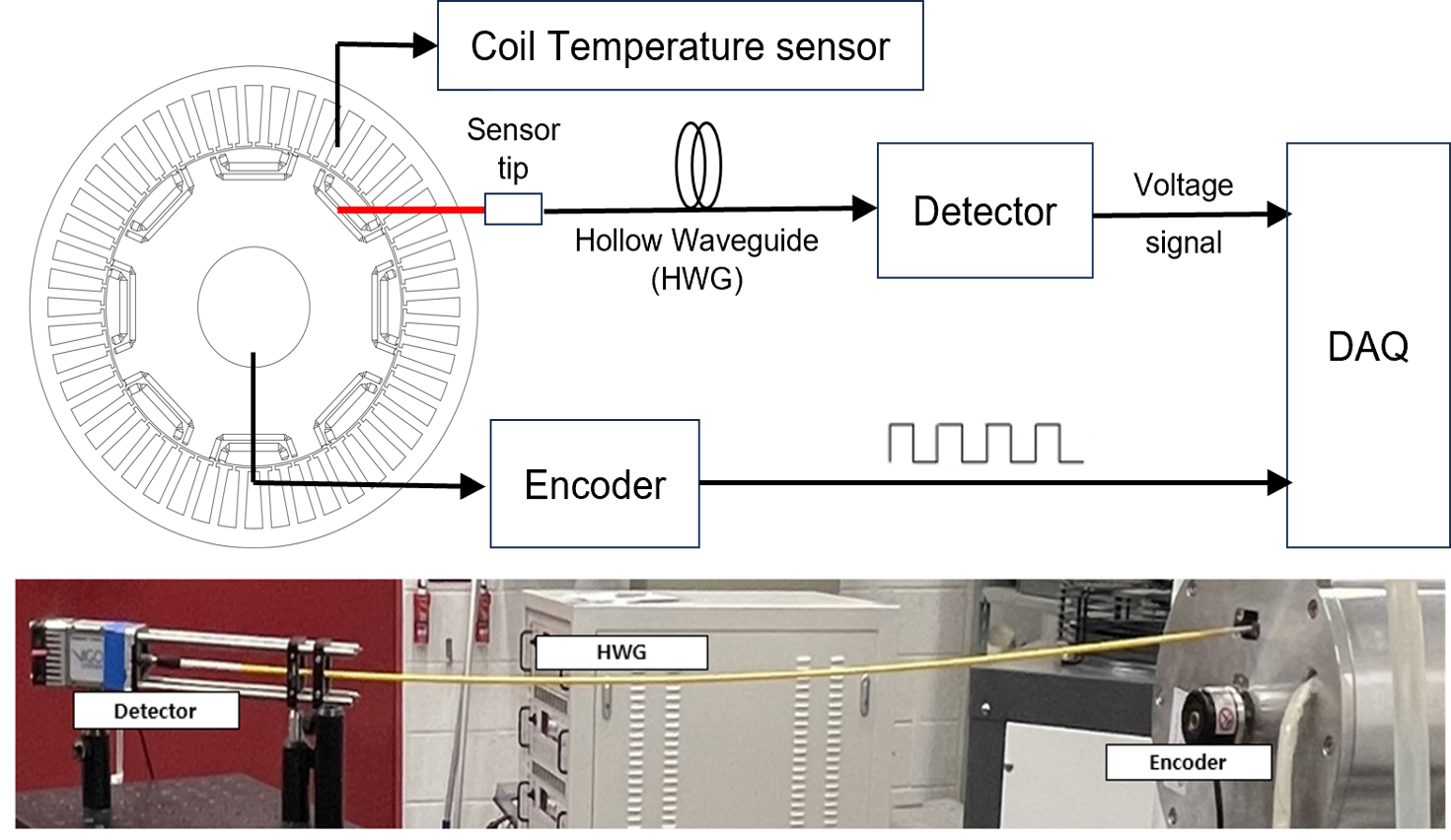
This work is focused on developing a direct optical thermometry technique for permanent magnets (PMs) embedded in a rotor of an electric motor (EM). Although high temperatures can be critical to an EM’s performance, the lack of reliable and accurate PM thermometry increased the uncertainty of the motor conditions during operation. The developed technique can be configured to resolve all the PM surface temperatures embedded in the rotor as well as the rotor core temperature very accurately with little to no modification.
The technique has been successfully demonstrated in-situ on an IPMSM.
Publications
Tail-pipe and battery off-gas emission gas sensing using QEPAS
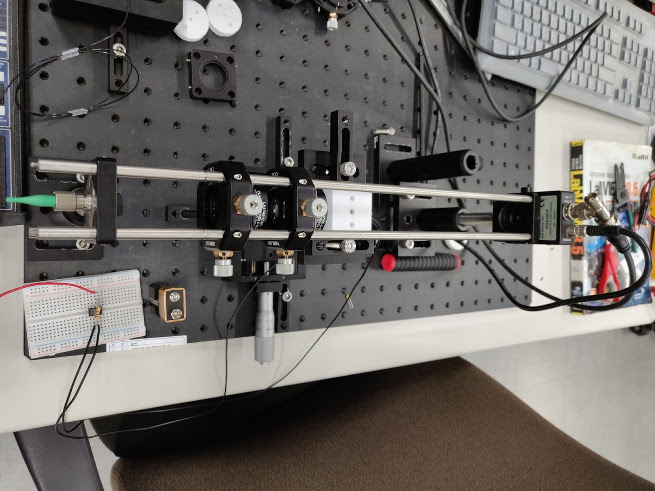
This study is to develop a portable optical On-Board Diagnostic (OBD) sensor measures the concentration of exhaust gas in accordance with vehicle exhaust gas regulations. Molecular absorption spectroscopy, which exploits the principle that each molecule has a unique absorption spectrum, offers sensitive selectivity and rapid response times in the order of a few nanoseconds for absorption and relaxation processes. Quartz-Enhanced Photoacoustic Spectroscopy (QEPAS), which uses spectroscopy as a measurement technique and QTF as a detector, was selected as the target development sensor. The results were obtained through driving cycle experiments applied to actual vehicles, and the performance was proven through sensor calibration. Our team plan to miniaturize it by introducing an embedded system in the future.
Publications
Optical gas sensing using TDLAS and SCLAS
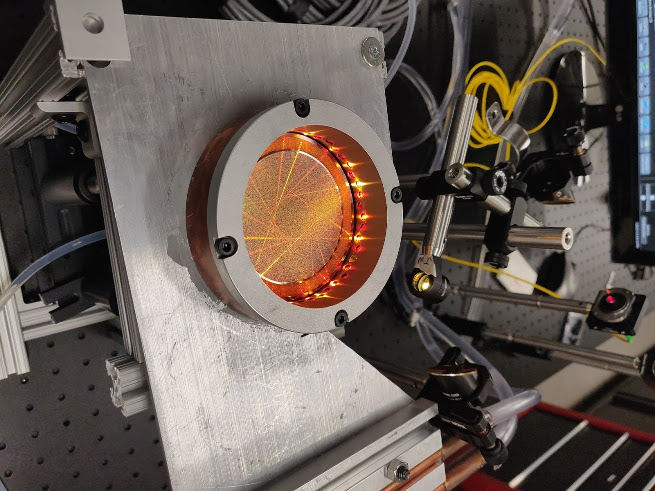
This study is focused developing laser-based optical diagnostics technique for detecting trace gases and their thermodynamic properties. Main applications are reactive flow systems such as propulsion and hybrid-electric drives.